.
NOT AS BAD AS THEY SAY — The published CanWest version
A port of call for Colombian drug smugglers is actually overrun with mango salesmen
National Post (Latest Edition)5 Dec 2009 By Jack Drury
.
A man with a machete approaches from the opposite direction. Ellen looks left. I look right. We are on a narrow forested foot path with nowhere to run.
Little Corn Island, long known as a port of call for Colombian drug smugglers, sits 85 kilometres off the coast of Nicaragua. The guide books say that tourists should guard against armed robbery, cabin break-ins and the occasional forest-path rape.
“You want to buy a mango?” the machete man, revealing a big toothy grin, asks when he reaches us.
“N’no thanks,” I say, fumbling, nervous. But Ellen’s eyes light up as she peers inside the man’s cloth sack at the red and yellow fruit.
“How much are they?” she asks, thoughts of rape and robbery carried off with the Caribbean breeze.
“One dollar each,” he replies.
“I’ll take four,” she says. We’d spent days wondering if coming to Little Corn Island was wise.
But the guide books also listed Little Corn as a tropical paradise, with undisturbed beaches and tranquil waters.
We’re staying in Ensueños, a 30-minute hike from Little Corn village on the most northerly part of the island. The eccentric owner/artist Ramon, originally from Madrid, has created adobe gnome houses that he has scattered throughout his beachfront property. Our troll house has five tall coconut palms growing from within, right up through the ceiling and into the sky. And it’s just $25 a night.
Most travellers come to Little Corn for the diving. Although the reef is mostly shallow, there’s a plethora of colourful fish. A white tip shark here, a trumpetfish there, then a massive spotted eagle ray sails by. Grant’s Cave is a remarkable underwater cavern, just eight metres deep. As you make your way through the semi-darkness, you come across brilliant beams of light shining through holes in the ceiling of the cave where fish gather, basking in the rays.
One day, I was just about to nod off in the hammock outside our gnome home when I heard a shriek.
A barracuda shot past Ellen’s knees where she was standing in waist-deep water. I rushed to her side. The barracuda was gone, but multi-coloured angel and parrotfish had arrived to lunch on our beachfront reef. It defined what a tropical paradise should be.
Inexpensive, out-of-this-world seafood is served everywhere. We loved the eatery known as the Cuban restaurant, by the docks. We’d wait until the sun went down — and remember to take a flashlight to help us find our way back to our little gnome home.
Little Corn Island has a population of 2,000. There are no roads, no cars and only sporadic electricity. But Eden lacked these amenities, too. The ethnic makeup is Caribbean Black and mainland Latino. The Black population speaks Creole amongst themselves, a Creole-Spanish with the Latinos and a fine-cultured English with the tourists. Everyone is friendly. No armed robberies or cabin break-ins have been reported since our arrival. And rape occurs only among the cat and dog population.
Atlantic Airlines and La Costeña each have two daily flights from Managua to Big Corn Island (US$160 return). From Big Corn, it’s a 30-minute boat ride to Little Corn Island. For more information, visit ensuenos-littlecornisland.com

 Little Corn Island, Nicaragua
Little Corn Island, Nicaragua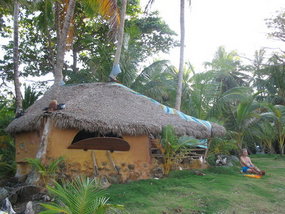
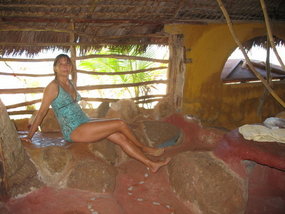
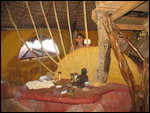















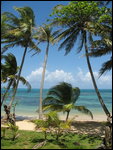
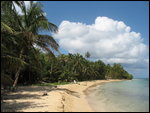
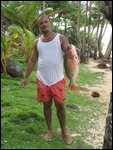
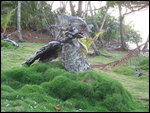
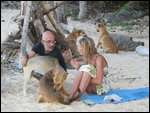
starlagurl
2008-03-12
Holy!
Beating off sharks with the end of a spear gun... Amazing...
Louise Brown
TravelPod Community Manager